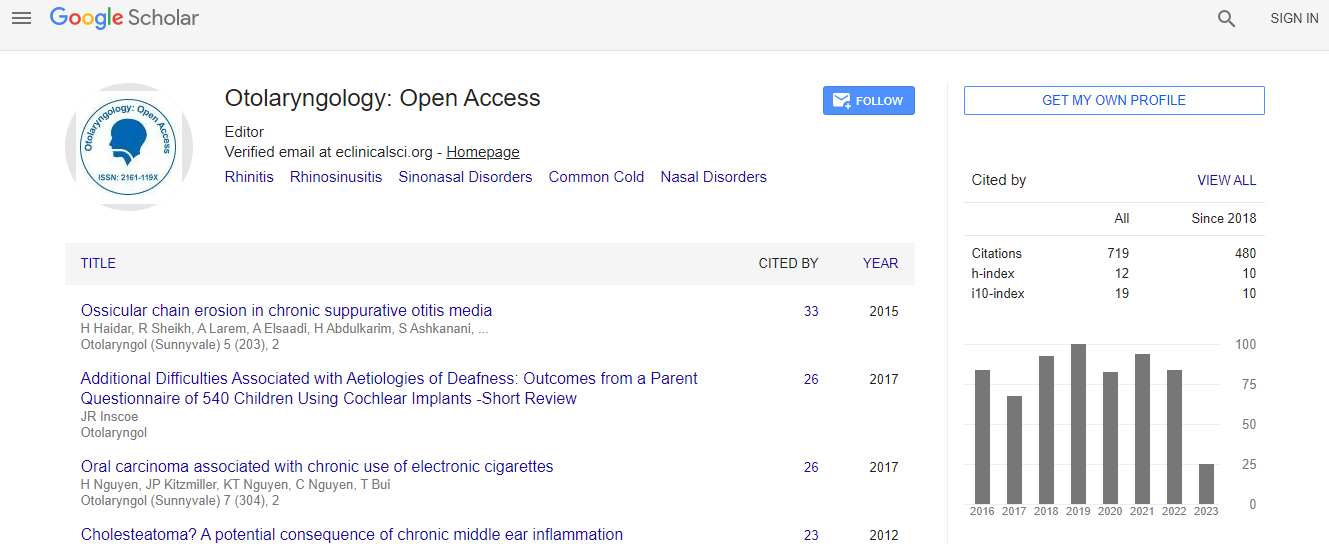Otolaryngic Allergy: Emerging Diagnostic Techniques and Personalized Treatment Approaches
*Corresponding Author:Received Date: Dec 30, 2024 / Published Date: Jan 30, 2025
Citation: Tsung-Lin Y (2025) Otolaryngic Allergy: Emerging Diagnostic Techniques and Personalized Treatment Approaches. Otolaryngol (Sunnyvale) 15: 618.DOI: 10.4172/2161-119X.1000618
Copyright: © 2025 Tsung-Lin Y. This is an open-access article distributed under the terms of the Creative Commons Attribution License, which permits unrestricted use, distribution, and reproduction in any medium, provided the original author and source are credited.
Abstract
Otolaryngic allergies, affecting the ear, nose, and throat (ENT), have seen an increase in prevalence, necessitating advancements in diagnostic and treatment methodologies. Traditional diagnostic techniques, including skin prick tests and serum-specific IgE tests, have limitations in sensitivity and specificity. Emerging diagnostic techniques such as component-resolved diagnostics (CRD), molecular allergology, and advanced imaging modalities offer improved accuracy and precision in allergy identification. Personalized treatment strategies, including immunotherapy, biologics, and precision medicine, are revolutionizing allergy management by targeting specific immunologic pathways. This review explores recent advancements in otolaryngic allergy diagnostics and personalized treatment approaches, emphasizing their clinical relevance and future implications.

 Spanish
Spanish  Chinese
Chinese  Russian
Russian  German
German  French
French  Japanese
Japanese  Portuguese
Portuguese  Hindi
Hindi 
